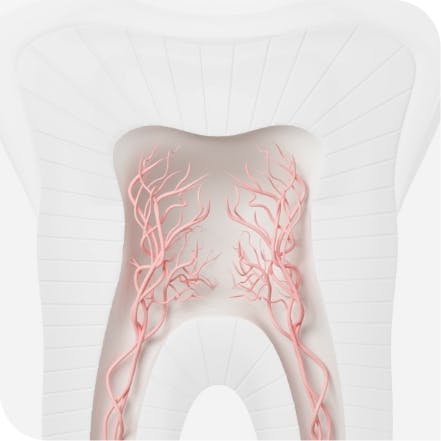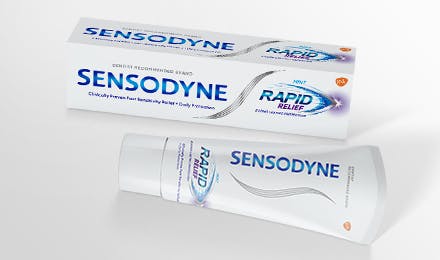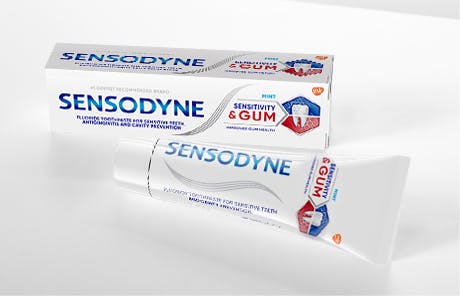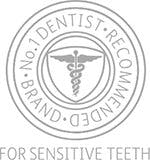What is Periodontal Disease?

Periodontal disease is when the tissues that hold your teeth in place—your gums—become infected.1 This infection, also known as gum disease, is often brought about by poor dental hygiene that allows plaque—a sticky film of bacteria—to build up on the teeth and harden.1 If gum disease is allowed to progress to advanced stages, it can lead to sore, bleeding gums; painful chewing problems; and even tooth loss.1
Understanding the causes, types, and signs of periodontal disease can help you prevent and treat this infection and improve the health of your teeth and gums.
What Causes Periodontal Disease?
Gum disease is caused by the plaque that clings to your teeth. While this sticky film of bacteria can easily be removed by brushing your teeth twice a day, if allowed to build up, it can cause your gums to pull away from your teeth.2 This forms pockets of space between your teeth and gums that allow more bacteria to collect.2 If plaque is not regularly removed, it can accumulate along and under your gums and harden into a substance called calculus. The combination of pockets between your teeth and gums and hard-to-remove calculus can cause periodontal disease to develop.2 Without proper treatment, this disease can damage the tissue and bone that support your teeth.2
Different Stages of Gum Disease
Periodontal disease is often silent, and symptoms may not appear until the infection has reached an advanced stage.3 Understanding the different stages and types of gum disease may help you identify an issue before it advances:
- Gingivitis. This is the mildest form of periodontal disease and can cause the gums to bleed easily or become red and swollen.3 Luckily, gingivitis can be reversed with thorough at-home oral care and professional treatment.3
- Periodontitis. If left untreated, gingivitis can progress and plaque can spread below the gum line.3 The bacteria in plaque can produce toxins that stimulate a chronic inflammatory response that causes the body to turn on itself.3 During advanced periodontal disease, gums separate from the teeth and gum tissue and bone are destroyed. Teeth can become loose and fall out or need to be removed.3 Your dentist or periodontist will assess your case and may stage it as being initial or severe, depending on the acuity of your symptoms. They may also assign it a grade depending on its rate of progression and how your dental health provider anticipates that it will respond to treatment.3
What are the Signs of Periodontal Disease?
There are a few warning signs that may indicate the presence of periodontal disease. Knowing what to look for can help you seek appropriate treatment.1,2,3
- Constant bad breath
- Pus between your teeth and gums
- A change in the way your teeth fit together when you bite down
- A change in the fit of partial dentures
- Sores in your mouth
- Loose or separating teeth
- Bleeding while brushing, flossing, or eating hard food
- Swollen or tender gums
- Receding gums that cause your teeth to appear longer
Periodontal disease may also be responsible for tooth sensitivity.4 As the gum tissues pull away from teeth, the root surfaces may be exposed, leading to pain and sensitivity.4
Gum Health Tips
Adults can improve gum health and help prevent periodontal disease by brushing twice a day with a fluoride toothpaste like Sensodyne Sensitivity & Gum Fresh & Clean Toothpaste.1 Another great way to improve the health of your teeth and gums is to floss regularly to remove plaque from between your teeth.2 Routine dental checkups and professional cleanings can make a huge difference in the overall health of your mouth. Your dentist and dental hygienist can also give you pointers on brushing so that you’re more effectively cleaning your teeth.2
Source Citations
- Periodontal (Gum) Disease. National Institute of Dental and Craniofacial Research. https://www.nidcr.nih.gov/health-info/gum-disease. Accessed 8/17/22.
- What is gum disease? Journal of the American Dental Association. https://jada.ada.org/article/S0002-8177(14)61881-X/fulltext#seccestitle30. Accessed 8/17/22.
- Gum Disease Information. American Academy of Periodontology. https://www.perio.org/for-patients/gum-disease-information/. Accessed 8/17/22.
- Sensitive teeth. Journal of the American Dental Association. https://jada.ada.org/action/showPdf?pii=S0002-8177%2814%2965480-5 . Accessed 8/17/22.













